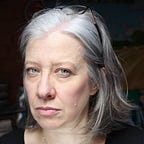The Cottages of Donegal
I love the Donegal islands for their peace and quiet. Oh, the relative absence of cars, the abundance of nature but I particularly love their houses. You may have noticed that I painted quite a few of them, lately; lovely long strings of houses.
I love their simple clean lines. I enjoy the old-style aesthetic. In Donegal, houses were whitewashed and woodwork was painted red. You still see a few houses like this. Sometimes you might see one with a thatched roof. Usually, their thatch has been replaced with tiled roofs.
When is a house a cottage? When it’s small and old and hand-built by its inhabitant, I suppose. In England, the term cottage originates from the Anglo-Saxon term for the peasant or “cottar”, in Irish the word for these houses is “teachin” or “teach beag” which means small house. You can watch a short film on how to say “teach” in Irish here, you may think that word looks like an English word, but it’s pronounced very differently in Irish.
Cottages literally grew out of the landscape that surrounded them. It stands to reason that in the past homes were built from local materials. If the stones and wood had to be carried by donkey or man-power it wasn’t likely to come from very far away. Stone would predominantly be used in coastal and rocky areas, muddy clay in the midlands and even turf in boggy areas.
Cottages came in different sizes; from the tiny laborer’s cottage or Bothán Scóir (a one-roomed house with mud floors and often not even a window); the byre dwelling (a slightly larger cottage that was shared with the animals) to the thatched mansions — two-storey thatched farmhouses that were often extended from single-storey cottages as the occupants become wealthier.
In Donegal “direct entry” houses were typical, where the front door open directly into the room with the fireplace. The most popular form of cottage is that with the living area at the center with the hearth fireplace and a bedroom on either end.
The fireplace or hearth usually formed of stone and located at the center of the house with a bedroom behind it to further absorb the heat.
In rural Ireland, they did not usually own the land it stood on. This is why landlords could evict tenants for non-payment of rent (usually, if they wanted to replace people with more profitable sheep), even those the occupants had built those houses themselves. In the case of John George Adair of Gleanveagh, he had the houses pulled down after the tenants were thrown out! This was common eviction practice. Anyone who has seen the excellent film Black 47 will know that this practice, could and did, lead to the death of old and frail tenants in winter.
Houses were designed through necessity. The general rule was that the front door of the cottage faced south, to shelter the house from the prevailing westerly winds. Windows were small in order to retain heat in the winter and to keep cool in the summer. Ground floor windows usually faced to the south, not on the gable ends.
There were often small windows on the first floor of the gable walls where there were loft accommodations. The walls of a cottage were typically about 600mm thick to support the roof and beams, this led to the attractive deep window reveals found in most cottages.
You may have noticed that many old Irish houses are not one single unified block, but are made up of several extensions, a kitchen at the back, an extra room to the side. Homes were enlarged when money was available. Often this money was earnt far away from home as hardship forced family members to look for seasonal work far away in Derry, Tyrone or even in Scotland.
Modern houses in Donegal, like modern houses in most places, are comfortable, spacious with plenty of windows. Older people, here as elsewhere, I suspect prefer bungalows for their lack of stairs.
Yet, there is still a space for the old style. On Cruit Island there is a holiday village of new-build holiday homes in the “old” style. They are single story with thatched roofs but they are large, comfortable, and furnished with wooden rocking chairs, and folksy bedspreads. They also have a beach a stone’s throw away. Obviously, there are real old houses you can stay in on Cruit Island too.
I sometimes wonder if I am painting a “fake” version of Ireland. I am giving the impression that all of Donegal is covered in little quaint white houses? It isn’t, but they are there. Especially in the Rosses and on the islands. Not all of the houses are quaint in North-West Ireland; the “bungalow blight” that affects parts of Donegal has been commented on by others. I suppose I am drawn to the clean lines of the old houses.
This is a theme I have explored in a different context, previously. A couple of years ago I explored the “Hollowed Community” of Brynmill and painted the Edwardian terraces that surround my home in Swansea. I was also interested in a lost community. The old way of life (pre-internet) that is fast vanishing, where your neighbors lived next to you for years, not for weeks or just the summer months.
This was originallly published on www.emmafcownie.com
See available paintings of Donegal
To find out more about the history of the Irish cottage see the links below
https://cottageology.com/irish-cottage-history/
Places you can also visit
http://www.glenfolkvillage.com/
https://www.museum.ie/en-IE/Museums/Country-Life/Exhibitions/Hearth-and-Home
